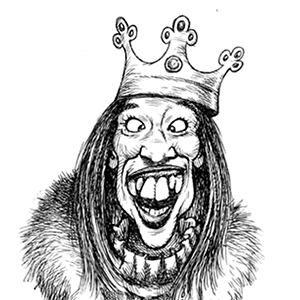Eric's Autos: 2025 Subaru Forester
There's an old saying in engineering circles: If it ain't broke, don't fix it. That sums up the changes to the Subaru Forester for 2025. It has been updated. But it hasn't been fixed.
What It Is
The Forester is a compact crossover that differs from other small crossovers in its class in two meaningful ways. The first being it is the only crossover you can buy that has a horizontally opposed four-cylinder engine, which means its are cylinders laid flat, each one boxing its opposite across the crankshaft. This layout is desirable because the boxing action cancels out vibration and because it's a compact layout versus in-line engines. And because it's a handling/balance advantage to have most of the engine's weight lower down in the chassis of the car.
The Forester also comes standard with all-wheel drive, and it's a more sophisticated kind of AWD in that it can modulate the power delivery from side to side as well as front to back. This is a handling as well as traction advantage, on-road and off. The latter in italics because while the Forester isn't an SUV -- much less a 4x4 -- it has almost 9 inches of standard ground clearance and driver-selectable X-Modes, including Deep Snow/Mud -- and these features endow this crossover with more poor weather/unpaved-road capability than the typical crossover.
Prices for the 2025 Forester start at $29,695 for the base trim -- which, like all Forester trims, comes standard with a 2.5-liter "boxer" four and AWD and a new (larger) secondary touch screen.
The next-up Premium ($31,995), Sport ($34,495) and Limited ($35,995) trims are defined by their differing standard amenities, such as the StarTex easy-clean simulated leather upholstery that comes standard with the Sport, along with different wheel sizes/designs.
A top-of-the-line Touring ($39,995) comes standard with most of the features that are optional on the lower-priced trims and has been tuned for a softer/quieter highway ride.
What's New For 2025
Subaru changed almost everything but didn't make any radical changes.
The basic layout is the same -- and it's hard to see much difference, at a glance -- but the new Crosstrek is about three-quarters of an inch longer, and once you look inside, you'll see it's fancier-looking than before -- the most obvious thing being the now-standard and much larger LCD touch screen.
There are also some things you can't see, including a new "dual-pinion" steering rack that's similar to the one used in the Subaru WRX (this is intended to make the Forester's steering feel sharper and more like the WRX) along with fine-tuning of the 2.5-liter boxer four to improve low-end torque.
What's Good
-- More capable in bad weather (and on bad roads) than other crossovers in the class, such as the Toyota RAV4 and Honda CR-V.
-- Boxer engine is different than the engines in all the other crossovers in the class.
-- AWD isn't extra-cost.
What's Not So Good
-- No optional (more powerful) engine.
-- Continuously variable transmission automatic is the only available transmission.
-- Base price is up by about $2,600 versus last year.
Under the Hood
Every Forester trim comes standard with a 2.5-liter four-cylinder engine -- which isn't unusual (as such) in the class. What is unusual about the Forester's engine is that it's a boxer engine. This type of engine is not upright -- or angled -- and its cylinders aren't in-line.
They are laid flat and opposed to one another.
This has a number of advantages -- as mentioned above, the engine is much more compact than an inline engine with the same number of cylinders, and it naturally cancels out the engine vibrations that in other engines require heavy counterbalancing weights on the crankshaft so you don't feel them.
The engine is also flat -- and so not as tall -- and that puts the weight lower in the car's chassis, which improves the car's handling. This is one of the reasons why Porsches have boxer engines.
There is also an intangible advantage -- shared with Porsches. It is that boxer engines have a different character. They sound different than in-line and angled engines. And that character helps make the Forester a little bit different than all those other crossovers.
That's no small difference in this class of vehicle.
Also, the Forester's boxer isn't turbocharged -- because it is 2.5 liters rather than 2.0 liters or even less than that. It is large enough, in other words, to make adequate power (180 horsepower) without needing a turbocharger.
This reduces both the number of parts as well as the pressure this engine isn't under to produce power, and that is an inherent advantage as regards engine longevity.
On the Road
As mentioned earlier above, the Forester's AWD system can modulate power flow from side to side as well as front to rear. The latter helps keep the front wheels -- typically the primary drive wheels in AWD-equipped vehicles -- from slipping when the road is wet or snow-slicked by routing power to the rear wheels when the system senses the front wheels are beginning to lose grip. But the former -- side to side -- can correct for under- and oversteer during high-speed cornering.
At the Curb
Subaru did not upsize the Forester, which is almost exactly the same length (183.3 inches now versus 183.7 inches previously) and interior dimensions -- including cargo capacity behind the second row (29.6 cubic feet) and with the second tow folded (74.4 cubic feet) -- as it was before.
Which is fine, because the size of this Subaru didn't need to be "fixed."
The main changes are upgrades, including the new/larger LCD touch screen and the now-available foot-swipe-activated power rear liftgate.
The Rest
Everything has gotten more expensive over the past several years -- and the Forester is no exception. The new model costs $2,600 more to start than the previous model, and while you do get an updated Forester for your money, it nevertheless costs significantly more money at a time when people are less able to pay it.
While $2,600 is not a huge difference -- when factored over the course of a six-year loan -- it's not a small difference either.
The Bottom Line
The Forester is as it was -- just slightly nicer and a little bit pricier.
========
Eric's latest book, "Doomed: Good Cars Gone Wrong!" will be available soon. To find out more about Eric and read his past columns, please visit the Creators Syndicate webpage at www.creators.com.
Copyright 2024 Creators Syndicate, Inc.








Comments